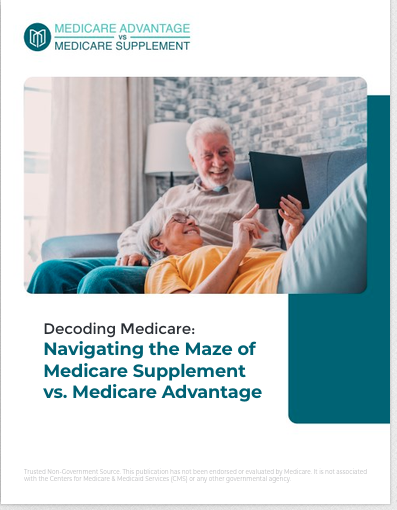Key Takeaways:
-
Standalone Medicare drug plans (Part D) and bundled options (Medicare Advantage with drug coverage) each have benefits and trade-offs, including cost, flexibility, and network restrictions.
-
Your choice depends on factors like medication needs, provider preferences, and whether you want additional health benefits beyond prescription coverage.
Exploring Medicare Drug Coverage: Standalone Plans vs. Bundled Options
Navigating Medicare can feel overwhelming, especially when choosing prescription drug coverage. You’ll encounter two main options: Standalone Medicare Part D plans and Medicare Advantage plans that include drug coverage. Each option offers distinct benefits and potential drawbacks, so understanding the differences can help you make a decision that fits your health needs and budget.
Understanding Standalone Medicare Drug Plans (Part D)
A Medicare Part D plan is a standalone prescription drug plan that works alongside Original Medicare (Part A and Part B). If you prefer to keep your healthcare coverage separate from your drug plan, this option may appeal to you. Here’s what to consider:
What You Get with a Standalone Drug Plan
-
Coverage for prescription drugs: Each Part D plan has a formulary (list of covered drugs) categorized into different tiers, affecting your copayments and coinsurance.
-
Flexibility in provider choices: Since Part D is independent of Medicare Advantage, you can see any healthcare provider that accepts Medicare.
-
Ability to pair with other coverage: You can have Part D while keeping Original Medicare or even supplementing with a Medigap policy.
Considerations Before Choosing a Part D Plan
-
Monthly Premiums and Deductibles: Part D plans typically come with a separate monthly premium and an annual deductible. In 2025, the maximum Part D deductible is $590.
-
Formulary Differences: Not all Part D plans cover the same medications, so checking a plan’s drug list is essential.
-
Coverage Phases: Part D includes different stages—deductible, initial coverage, and catastrophic coverage—affecting what you pay out of pocket.
Medicare Advantage Plans with Drug Coverage (Part C)
Medicare Advantage (Part C) plans are bundled alternatives to Original Medicare, often including prescription drug coverage (MAPD plans). These plans are offered by private insurers approved by Medicare and come with a range of healthcare benefits.
What You Get with a Bundled Plan
-
All-in-One Coverage: Medicare Advantage plans often bundle hospital, medical, and drug coverage into a single plan.
-
Additional Perks: Many plans include extra benefits like dental, vision, hearing, and wellness programs.
-
Structured Network of Providers: You may have to use a specific network of doctors and pharmacies.
Considerations Before Choosing a Medicare Advantage Plan
-
Network Restrictions: Unlike standalone Part D plans, Medicare Advantage often requires you to use in-network providers and pharmacies.
-
Plan Availability Varies by Location: Not all plans are offered nationwide, so your options may be limited depending on where you live.
-
Cost Differences: While these plans may offer integrated benefits, you’ll need to compare total out-of-pocket costs, including premiums, deductibles, and copays.
Key Differences Between Standalone and Bundled Plans
| Feature | Standalone Part D Plan | Medicare Advantage with Drug Coverage |
|---|---|---|
| Prescription Coverage | Yes | Yes |
| Doctor & Hospital Coverage | No (Only covers medications) | Yes (Includes medical and hospital benefits) |
| Network Restrictions | No (Any Medicare-accepting pharmacy) | Yes (May have preferred networks) |
| Additional Benefits | No | Often includes dental, vision, hearing |
| Costs | Varies by plan, separate from other Medicare costs | Bundled with overall plan costs |
Choosing the Best Option for You
Your decision between a standalone Medicare drug plan and a bundled Medicare Advantage plan should be based on personal factors, including:
-
Your Prescription Needs: If you take multiple medications, you’ll want a plan that covers them affordably.
-
Doctor and Hospital Preferences: If you prefer a specific doctor, make sure they accept the plan you’re considering.
-
Healthcare Needs Beyond Prescriptions: If you want extra benefits like dental and vision, a bundled plan may be a better fit.
-
Budget Considerations: Evaluate your monthly costs, deductibles, and potential out-of-pocket expenses.
Things to Watch Out For
-
Changing Formularies: Both standalone and bundled plans can update their covered drug lists each year.
-
Medicare’s Annual Enrollment Period: From October 15 to December 7, you can switch plans based on changes in coverage or cost.
-
The Late Enrollment Penalty: If you don’t enroll in Part D when first eligible and don’t have other creditable coverage, you may face permanent late penalties.
Making an Informed Decision
Comparing standalone Medicare drug plans and bundled Medicare Advantage plans comes down to your unique healthcare needs. Whether you prioritize flexibility, cost savings, or extra benefits, reviewing your options carefully will ensure you get the right coverage for your prescriptions and overall health.









